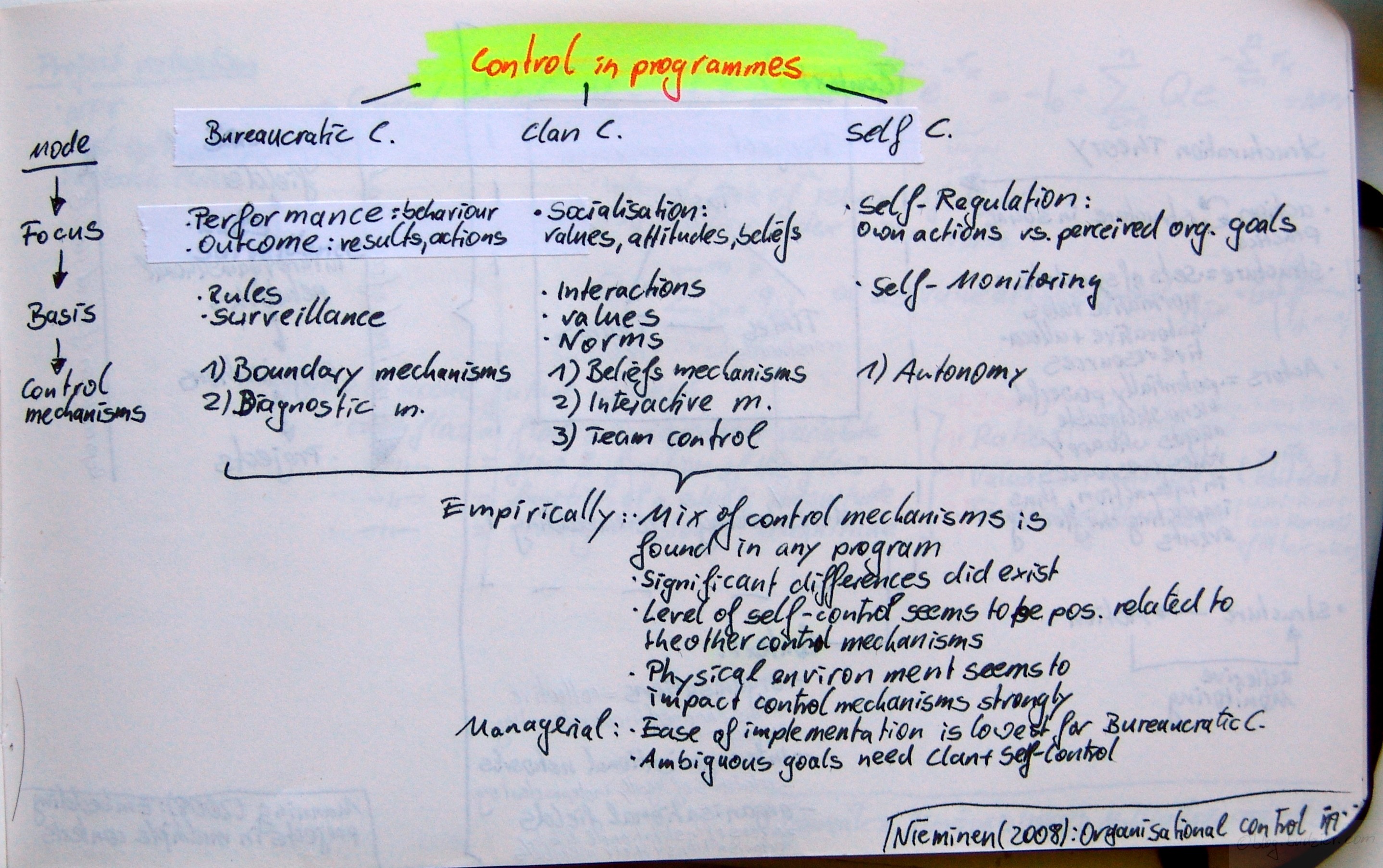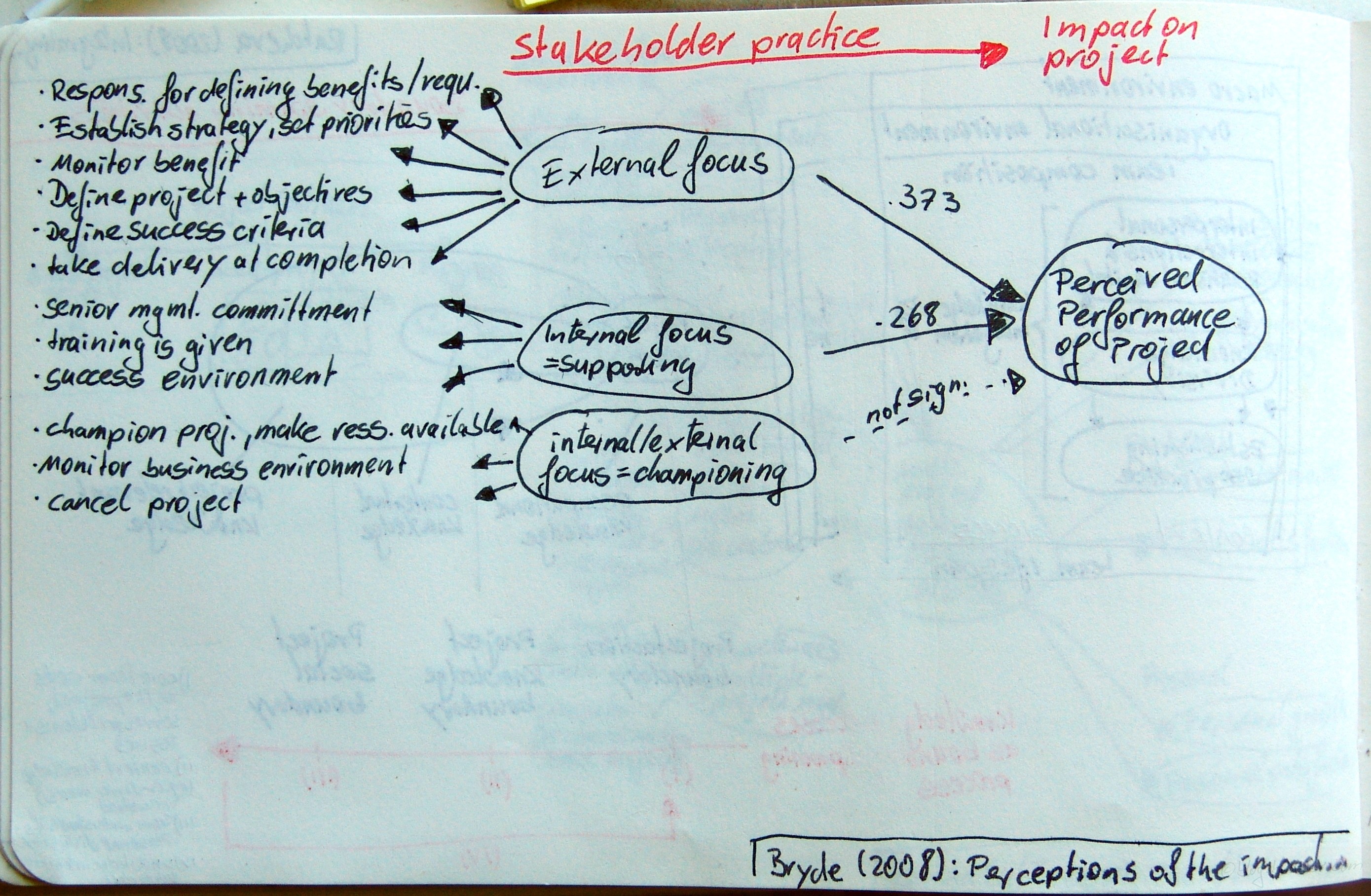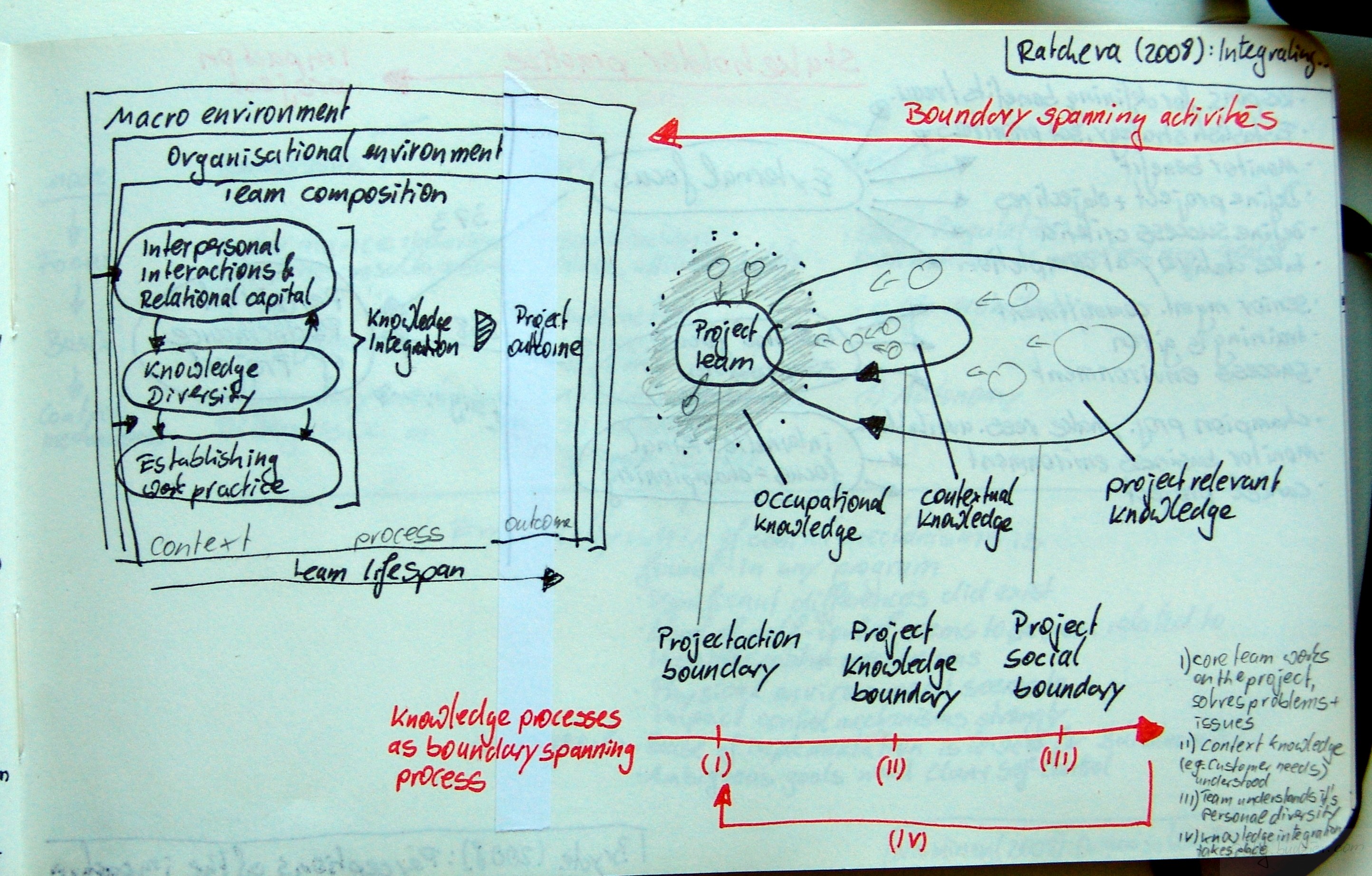Manning, Stephan: Embedding projects in multiple contexts a structuration perspective; in: International Journal of Project Management, Vol. 26 (2008), No. 1, pp. 30-37.
http://dx.doi.org/10.1016/j.ijproman.2007.08.012
Manning argues that projects are embedded in multiple contexts at the same time. These context facilitate and constrain the project at the same time and dynamically he describes this as „projects partly evolve in idiosyncratic ways as temporary systems, embedding needs to be understood as a continuous process linking projects to their environments“ (p.30).
Manning bases his analysis on Structuration Theory. It’s premise is to analyse action and structure (to interdependent concepts) in practice. Structuration Theory is defined by three key concepts – (1) structure, (2) actors, and (3) reflexive monitoring.
Structure is the set of symbolic and normative rules found in organisations. Furthermore the structure is set by authoritative and allocative resources. Actors are defined as potentially powerful and knowledgeable agents, who apply rules and resources in interactions, thus impacting the flow of events. As such structure impacts actions, which in turn impacts the structure. Reflexive monitoring is exactly this feedback loop from action to structure.
Applying structuration theory to projects Manning builds the concept of the project as temporary organisation, which is characertised by its tasks (=specification), times (=constraints), and teams (=relations). The author furthermore notices a constant process of disembedding and re-embedding into different contexts.
Which contexts are there? Manning identfies three. (1) organisations which are the collecitve actors engagned in coordinating projects, (2) interorganisational networks which are relations of legally independent organisations, and (3) organisation fields which are areas of institutional life by organisations and their members. Projects are embedded in all three of these contexts at the same time.
Lastly, Manning describes two embedding and re-embedding activities. Enactment of social contexts takes place top-down, that is from organisation fields –> interorganisational networks –> organisations –> projects, whereas the reproduction of social contexts takes place bottowm up.




